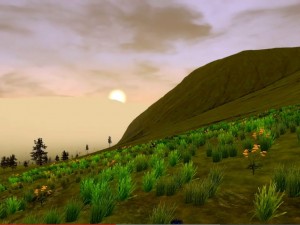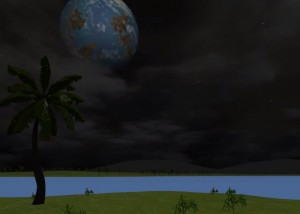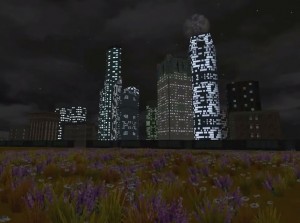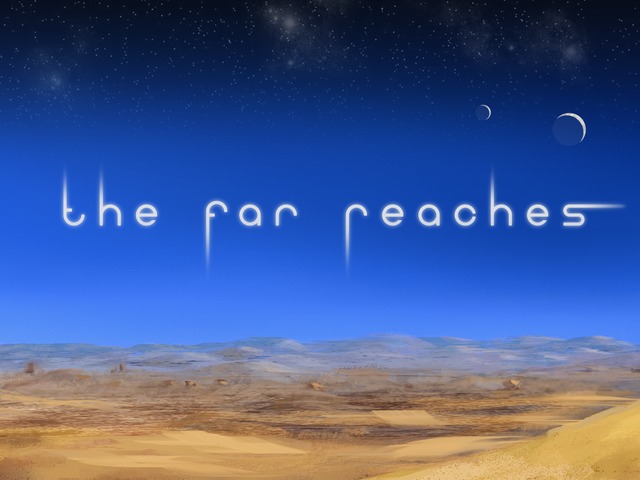Sam Ruggieri Discusses The Far Reaches
By Julie Morley
[divider]The Far Reaches is a unique MMORPG, designed to give players the feeling of an alternative reality rather than parading around in a virtual playground. It’s been on Kickstarter for a few weeks now and we’ve covered some important updates regarding TFR’s development and future. I had the honor of speaking with Sam Ruggieri, sole developer of The Far Reaches, to find out about his plans with TFR and what the future holds for it. Here’s what he had to say.
 Cliqist : For our readers who are unfamiliar with TFR, could you explain a little bit about it?
Cliqist : For our readers who are unfamiliar with TFR, could you explain a little bit about it?
Sam Ruggieri : I’d be glad to. TFR is an MMORPG that’s designed to push the boundaries of gameplay within the MMO genre. It’s designed to function more like a universe simulation than a traditional game. My background as a software engineer has involved extensive work on simulation systems and “serious games” (those meant for training purposes), and from a technical standpoint, TFR probably has more in common with some of these simulation environments than with traditional games.
The ultimate goal of TFR is to build a more dynamic, changing, living world than has ever been built in an online game before: a world that’s tremendously immersive. Players should feel like people in a simulated universe living a virtual life of their choosing, rather than feeling like a pre-packaged hero in a themepark game. I know it sounds less exciting, and it’s a bit counterintuitive, but this kind of experience is incredibly fun. Classic Star Wars Galaxies, an MMORPG from about a decade ago, provided this kind of experience, and it was the most fun I ever had playing a game.
The final thing I’ll say about TFR here is that, in many ways, TFR can be thought of as a spiritual successor to classic Star Wars Galaxies. Many elements of that game were remarkably well done, and I want to build on some of its best features. With the popularity of World of Warcraft, almost all MMORPGs that have been built in the last 10 years have been of the WoW / EQ lineage. As it stands, SWG was something of a unique specimen, and few games have tried to follow in its footsteps. TFR can be thought of as having the next generation of gameplay on the SWG branch of the MMO tree.
 Cliqist : Many people are skeptical about the TFR Kickstarter project due to the fact that you’re coding it up completely on their own. How long have you been working on TFR and how has it progressed as the sole programmer?
Cliqist : Many people are skeptical about the TFR Kickstarter project due to the fact that you’re coding it up completely on their own. How long have you been working on TFR and how has it progressed as the sole programmer?
Sam Ruggieri : TFR has been in the making for a very long time. I’ll talk a bit more about how development got started in a later question, but the earliest musings and prototyping of TFR really began around Thanksgiving 2011. The first year was spent purely in a prototyping and planning phase, exploring game engines and technologies that could be used to build an MMO. In 2013, I left my day job and put in a full time 14 months on building TFR. The result was a complete project design to guide the effort to the version 1.0 launch and roughly 100,000 lines of code. This is a lot to produce in only 7~8 months of full time implementation, and much of the core of TFR’s codebase is complete.
Progress has actually proceeded ahead of schedule, and the project is doing great from a technical standpoint. I hit all the milestones I targeted for the Kickstarter project, and I couldn’t be any happier with where the project is technically. There are still a number of peripheral gameplay systems to develop (bounty hunting, smuggling, the artist profession), but this stuff all sits on top of the server’s engine and framework. The hardest design and coding is done, and what remains is relatively straightforward.
 Cliqist : What is the current progress of TFR – programming-wise? What percentage of the game still needs to be programmed, if any?
Cliqist : What is the current progress of TFR – programming-wise? What percentage of the game still needs to be programmed, if any?
Sam Ruggieri : TFR is well beyond the halfway point from a code standpoint. Percentage estimates are notoriously difficult to give in software projects, but I’d say (conservatively) that with the latest developments in player housing, the game’s codebase is 55~60% complete. Player cities, survivalist professions, the artist profession, medical gameplay, and a few other things still remain, but none of these are of the order of complexity of the NPC system or distributed processing framework. Even with the likelihood that the Kickstarter campaign will fall short of its goal, I’m still confident that TFR can be released in 2015.
Cliqist : The NPCs AI is designed to mimic an active player in TFR which gives it a much more realistic feeling. Players are going to be more immersed in the world this way. What inspired this design?
Sam Ruggieri : I love this question – in the past, I’ve worked developing AI frameworks and with multi million dollar defense simulators. However, the most impressive, comprehensive universe simulation I’ve ever encountered is a game called Dwarf Fortress. As I understand it, the game is built by a pair of brothers in their apartment, and it’s like nothing I’ve ever experienced. The depth, the complexity, the shocking level of detail and complexity makes it one of the greatest games I’ve ever played. It’s more than a game. It really is a fairly comprehensive universe simulation, and it’s played a significant role in inspiring TFR.
The rest of the inspiration comes from places like classic SWG, JSAF (a simulation system I worked on in the past), and conversations with guildmates. I’ve got a couple great friends who have helped come up with so many of the ideas for TFR, and I can’t thank them enough for their contributions.
 Cliqist : What inspired the entire concept, story included, of TFR? What about the faction system?
Cliqist : What inspired the entire concept, story included, of TFR? What about the faction system?
Sam Ruggieri : Another awesome question! A lot of the inspiration for the concept and story are drawn from Isaac Asimov’s Foundation series and real human history. Isaac Asimov was an immensely talented science fiction writer, and his fictional civilizations in the Foundation series were among the most compelling and believable I’ve ever encountered. Astute observers will be also able to draw parallels between factions and historical figures in TFR’s universe and nations and people in history.
 Cliqist : Art Assets are the remaining part that needs the majority of work. What changes can we expect to see to TFR’s appearance (i.e. models, improved textures, etc.) once the funding is in place for it?
Cliqist : Art Assets are the remaining part that needs the majority of work. What changes can we expect to see to TFR’s appearance (i.e. models, improved textures, etc.) once the funding is in place for it?
Sam Ruggieri : In the coming months, we should see tons of new armor sets, weapons, animations, creature NPCs, buildings, and props to flesh out the world and make it look and feel more complete. These are the biggest pieces of the puzzle that are currently missing, and once these start to be added to TFR in numbers, the game will start to look much more like people expect.
 I could point to a number of failures in the execution of TFR’s Kickstarter campaign, but one of the biggest was in failing to convince people of the project’s validity. I don’t think anyone knows what I mean when I say, “The coding is mostly done, but the game is lacking art assets.” That statement has no meaning to a non-programmer, and it was pretty boneheaded that I thought people would understand what I meant when I said that. TFR doesn’t look complete, because it’s missing the things I mentioned above – if it doesn’t look complete, people aren’t going to think it’s a legitimate project. I’ve learned that I’m probably a better computer programmer than marketer, but I realize some of the mistakes I’ve made and will try to do better in this way in the future.
I could point to a number of failures in the execution of TFR’s Kickstarter campaign, but one of the biggest was in failing to convince people of the project’s validity. I don’t think anyone knows what I mean when I say, “The coding is mostly done, but the game is lacking art assets.” That statement has no meaning to a non-programmer, and it was pretty boneheaded that I thought people would understand what I meant when I said that. TFR doesn’t look complete, because it’s missing the things I mentioned above – if it doesn’t look complete, people aren’t going to think it’s a legitimate project. I’ve learned that I’m probably a better computer programmer than marketer, but I realize some of the mistakes I’ve made and will try to do better in this way in the future.
Cliqist : I end all my interviews with this question. If you could sum up TFR in five words, what would they be?
Sam Ruggieri :
It’s Gonna’ Rock. Just Wait.
Thanks to Sam for taking the time to answer my questions! You can learn more about The Far Reaches on its Kickstarter page. Funding is open until July 11th.
[divider][Google][pinterest][follow id=”Cliqist” size=”large” count=”true” ] [author image=”http://cliqist.com/wp-content/uploads/2014/01/julie.jpg” ]Julie Morley is a freelance writer and comic artist from Spring, Texas. She attended the Academy of Art University for two years, studying Animation and Illustration. Whilst here, she learned about writing comic scripts, storyboards, and general storytelling. Since leaving college, she has been working on personal comic projects, stories, and illustrations. She aspires to release a self published comic within two years. For the majority of her life, she has been playing console games, typically being third-person shooters and sandboxes. Her favorite game of existence is Dark Cloud II (Dark Chronicle) and her favorite Indie game is Gone Home.[/author]




